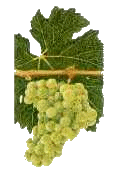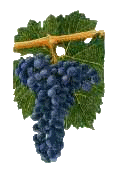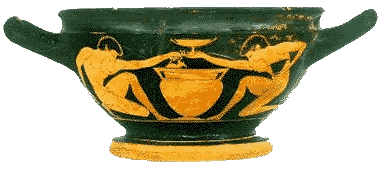

Ancient Wines - The so-called "European grape", Vitis vinifera, originated not in Europe but in the Black Sea region, and spread from there south to the Middle East so that by 6,000 BC grape vines were being cultivated in Mesopotamia. The vinifera grape then spread east to Phoenicia and Egypt, and by 2,000 BC Phoenician sailors were ferrying grapevines across the Mediterranean Sea to Greece and beyond.
 Although many early civilizations make reference to wine, the ancient Greeks were the first to take their grape growing and winemaking seriously. The importance of wine to Greek culture is evident in that they had a god of the vine named Dionysus (later Bacchus) who oversaw the cultivation of vineyards and the merriment of drinking. Greek wines were traded in distant ports, and, more important, Greek colonists transplanted grapevines to the far corners of the ancient world.
Although many early civilizations make reference to wine, the ancient Greeks were the first to take their grape growing and winemaking seriously. The importance of wine to Greek culture is evident in that they had a god of the vine named Dionysus (later Bacchus) who oversaw the cultivation of vineyards and the merriment of drinking. Greek wines were traded in distant ports, and, more important, Greek colonists transplanted grapevines to the far corners of the ancient world.
Ancient Greek wines were thick, dark, and syrupy, and needed to be cut with water (at times even seawater) to be drunk. In fact, drinking undiluted wine was scandalous. The grapes were harvested in the early Fall, and the Greeks placed seeds, stems and all into tubs where the grapes were stomped on with bare feet to squeeze out the juice. The unfiltered grape juice was then allowed to ferment in open vats. Because these wines were stored in goatskins, or clay amphorae stoppered only by greasy rags, there was exposure to air the entire time and spoilage was a continual problem. Thus, Greek wines needed to be drunk young, and the addition of herbs or honey was probably an attempt to hide the taste of spoiled wine. White barley or grated goats-milk cheese was often added as well and indicates that the wines were low quality. But the ancient Greeks knew no different, and they enjoyed their wine nonetheless.
 Greek colonists carried their love of the vine across the Mediterranean Sea, and around 1500 BC they introduced vineyards to the Italian and Iberian Peninsulas. One of their grapes was the Muscat, which is considered the ancient ancestor of most modern European wine grapes, particularly those French grapes that we hold in such high esteem today. Another ancient Greek grape was the Malvasia, which originated in Iberia (Spain) and eventually migrated northward into Gaul (France).
Greek colonists carried their love of the vine across the Mediterranean Sea, and around 1500 BC they introduced vineyards to the Italian and Iberian Peninsulas. One of their grapes was the Muscat, which is considered the ancient ancestor of most modern European wine grapes, particularly those French grapes that we hold in such high esteem today. Another ancient Greek grape was the Malvasia, which originated in Iberia (Spain) and eventually migrated northward into Gaul (France).
The Romans succeeded the Greeks and carried on the Greek tradition of grape growing and winemaking. They introduced vineyard innovations such as the pruning knife, and winemaking innovations such as the addition of gypsum to base wine to control excess acidity. They also refined the fermentation process, filtered out the sediment, and stored their wines in copper kettles and glass bottles to minimize exposure of the wine to air and facilitate aging. That the Romans appreciated aged wines is evident in Latin writings that praise the merits of hundred-year old Valerian and Opimian wines.
 The ancient Greeks were well aware that wines from different islands in the Aegean Sea had different characteristics. The Romans further realized that climate, soil, and the style of pruning all affect the flavor of a grape and ultimately affect the taste of wine. The Romans went so far as to classify their wines by regions, and there were even wine snobs in ancient Rome to advise the Emperors of which wines to best compliment which foods.
The ancient Greeks were well aware that wines from different islands in the Aegean Sea had different characteristics. The Romans further realized that climate, soil, and the style of pruning all affect the flavor of a grape and ultimately affect the taste of wine. The Romans went so far as to classify their wines by regions, and there were even wine snobs in ancient Rome to advise the Emperors of which wines to best compliment which foods.
Medieval Wines - Roman civilization began a slow decline after 400 AD that ultimately led Europe into the Dark Ages, and with this decline much of the art of grape growing and winemaking was lost. Only in the Church, where wine was needed to celebrate the sacrament, was an effort made to maintain vineyards. Some monasteries, in particular the great Benedictine and Cistercian abbeys in Burgundy, France and along the Rhine River of Germany, began producing surplus wine for their own enjoyment and that of the nobility. As Europe regained its appreciation for the fruit of the vine, winemaking began a slow resurgence.
 The Doomsday Book of William the Conqueror records that at the end of the 11th century there were 28 producing vineyards in Norman England. These vineyards prospered over the next 300 years, and England developed into an important center of European winemaking. Yet English vineyards, like those in most of Europe, were mainly associated with the church. About this time the farmers of Bordeaux, an English holding in France, developed a thriving wine industry of their own to wet the palates of their English overlords. Imports into England of Bordeaux wine, which the English called "claret", increased as a worldwide cooling trend slowly reduced the yields of English vineyards. This cooling trend, which culminated in the "little ice age" of the mid-1500's, together with the seizing of English monasteries during the religious reform of King Henry VIII, made the English wine industry unprofitable and hastened the emergence of Burgundy, Bordeaux, and the Rhine Valley to become the great centers of grape growing and winemaking that they are today.
The Doomsday Book of William the Conqueror records that at the end of the 11th century there were 28 producing vineyards in Norman England. These vineyards prospered over the next 300 years, and England developed into an important center of European winemaking. Yet English vineyards, like those in most of Europe, were mainly associated with the church. About this time the farmers of Bordeaux, an English holding in France, developed a thriving wine industry of their own to wet the palates of their English overlords. Imports into England of Bordeaux wine, which the English called "claret", increased as a worldwide cooling trend slowly reduced the yields of English vineyards. This cooling trend, which culminated in the "little ice age" of the mid-1500's, together with the seizing of English monasteries during the religious reform of King Henry VIII, made the English wine industry unprofitable and hastened the emergence of Burgundy, Bordeaux, and the Rhine Valley to become the great centers of grape growing and winemaking that they are today.
